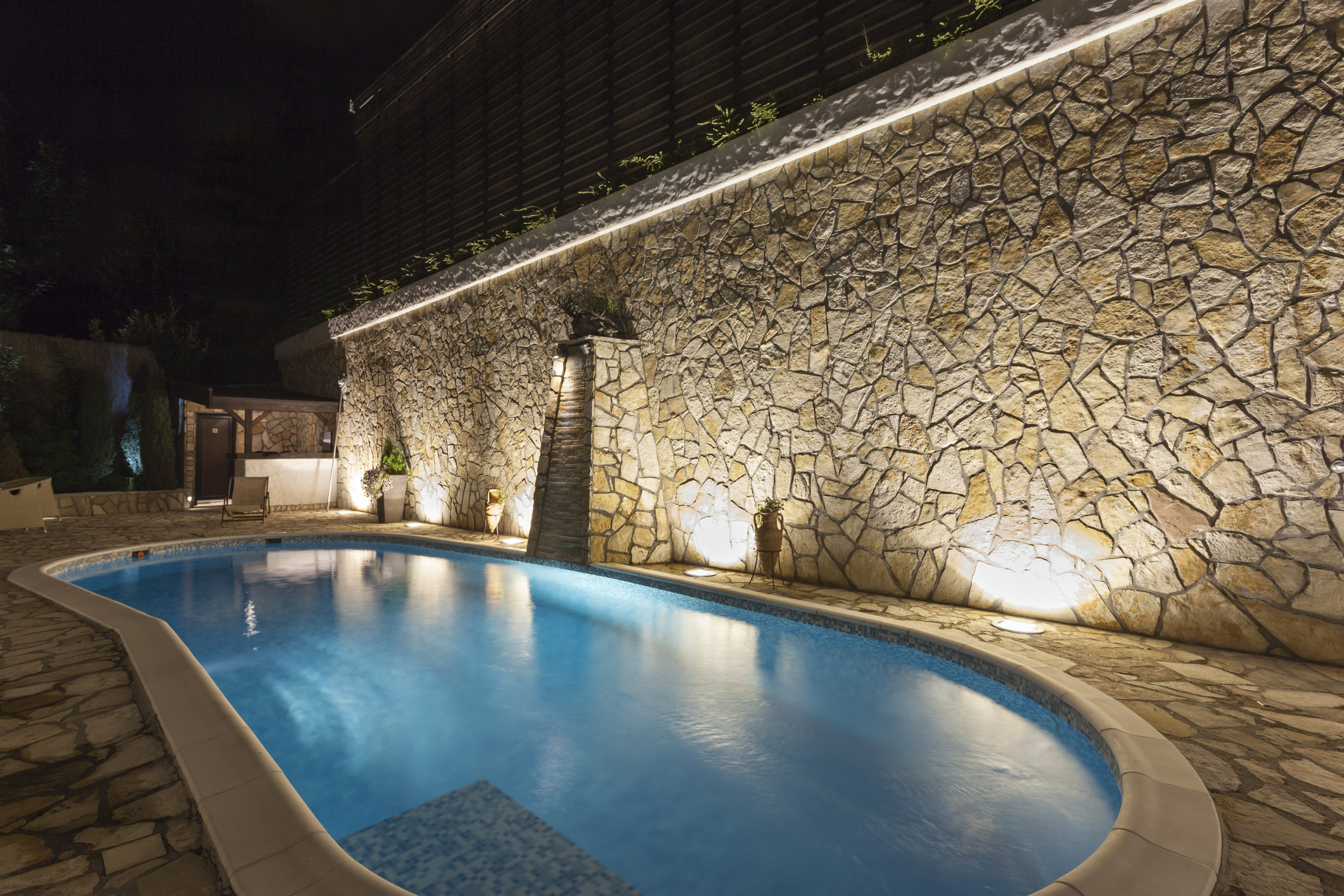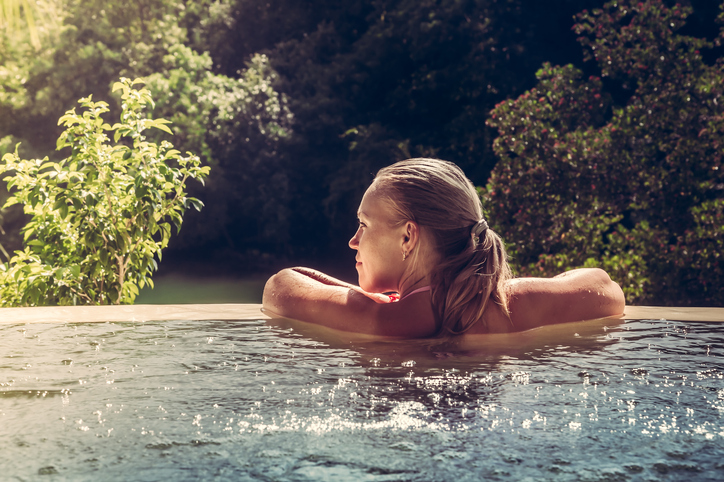LED the way: Light your Nighttime WaterSpace with New Outdoor LEDs

A host of new LED lights are making outdoor lighting more accessible, affordable, and a lot safer than those 120-volt wires running in conduit under your garden or patio. Now is the best time ever to upgrade the lighting in your outdoor living space.
Before you click “buy” on that online order, however, take time to develop a lighting plan. While LEDs make outdoor lighting easier and friendlier on your budget, you’ll still need to tackle a few technical details, wade through all the LED options, and design a plan that achieves the lighting effects that you want.
Artful Outdoor LED Lighting
In the article, “Color Choices in Pool Design” (see story here) we looked at how light changes colors in an outdoor environment. White light isn’t all the same, and its different tones (temperatures) change the colors you perceive. Like color, light has an enormous impact on our mood. Night lighting can be dramatic, soothing, exciting, or annoying. Creating a lighting design that adds pleasure and value to your home is an art. You either learn the art of lighting or get professional help from a designer.
Whether you decide to do it yourself or get help, there are some basic design principles you should be aware of:
- Think 3-D: In planning light placement think like a designer or architect and consider all three dimensions. Lights can be placed high, low or someplace in the middle, depending on use and the effect you envision. Visualizing lighting in three dimensional space—and getting it down on paper—can be a tall order. For more on 3-D design, click here to see “What Shape Means when Planning a WaterSpace.”
- Think Direction: Your lights can point up or down. The beam can be narrow, broad or defused, adding a subtle, directionless glow that spreads across the space.
- Think Intensity: Modern LEDs are dimmable, which gives you even more latitude in designing for effect. You can even automate your levels to adjust to the progression of available natural light from evening to night.
- Think Carefully about Blinking Lights: Just about any LED system that lets you dim the light also lets you make them blink with the push of a button, often offering a variety of blinking patterns and even changing colors. Used with care, you can avoid the Broadway at nighttime or Vegas strip vibe, but you should also understand that the human eye is finely tuned to focus on movement, even in your peripheral vision. Flashing lights easily become distracting, bordering on irritating.
-
Outdoor LED Power Options
You have three ways to power your LEDs but only two can give you bright enough and sufficiently reliable light you can depend on.
- Wired LED Lights: All you need is a transformer to step down your household current from 120 volts to 12 (get an electrician or contractor to do this part). You don’t need to dig up the ground to bury conduit for the wire. You can safely lay the wires on the surface of a garden and cover them with a little mulch. And if you should accidentally cut a wire, no one is going to get choked, much less electrocuted.
- Battery Powered LEDs: LED lights last a long time on battery power. They’re portable so you can put the light where you need it right now. And there are creative and beautiful battery powered lights available today.
- Solar Powered Lights: The solar LEDs you can buy at the big box stores aren’t a viable option for extended outdoor use. Even if you were lucky enough to get a full charge during the day, the light is too dim and the stored energy too little to last into the night.
-
Well designed, modern LED lighting can add texture and visual interest to your nighttime living space. With the push of a button, your lights can bring excitement and drama, or calm and serenity to the same place. An October, 2020, analysis by realtor.com found that homes with landscaped outdoor living spaces helped sell houses faster and at higher prices. Artful lighting of your WaterSpace is among the most cost effective ways to extend your outdoor enjoyment and add more resale value to your home.

